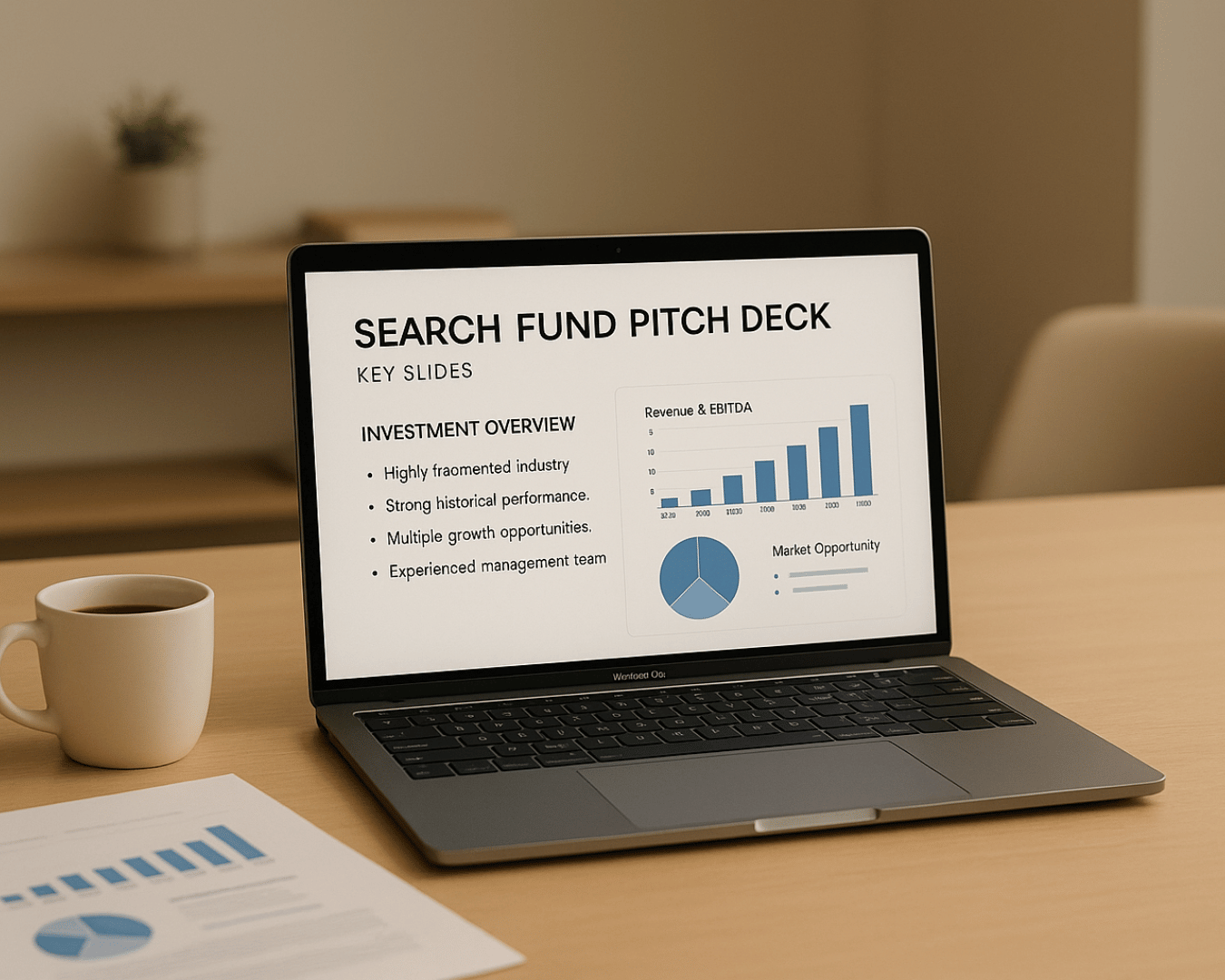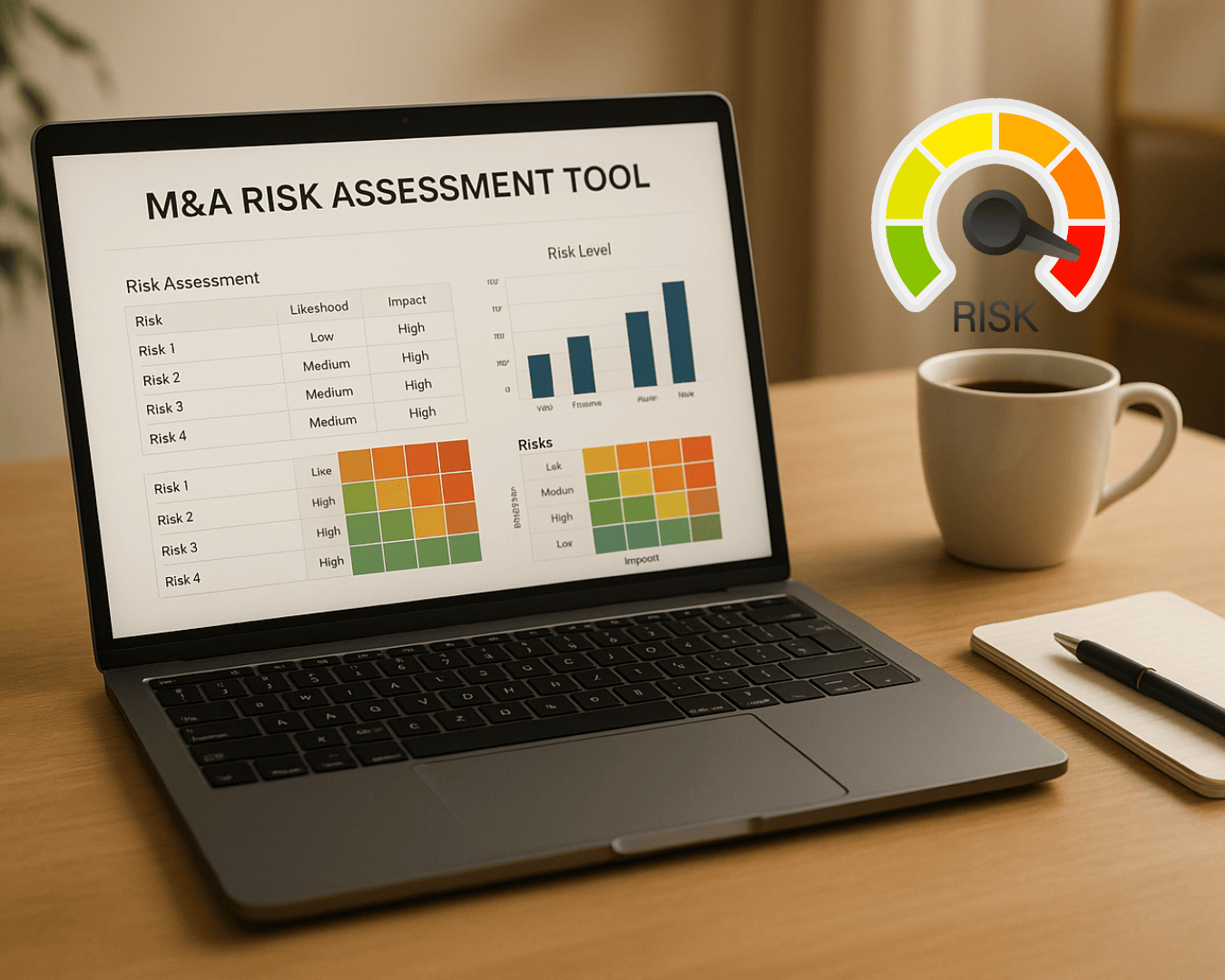Want to ensure your business thrives when leadership changes? Here's a simple roadmap:
- Pinpoint Key Roles: Identify positions critical to your operations.
- Define Success Profiles: List the skills and traits needed for these roles.
- Evaluate Candidates: Use tools like 360-degree feedback and behavioral interviews.
- Develop Talent: Create tailored growth plans for potential leaders.
- Monitor Progress: Regularly review and update your succession plan.
Succession planning isn't just for big companies - it's vital for small businesses too. Without it, you risk disruptions and losing key knowledge. Start early to secure your company's future.
Succession Planning Process in Five Steps
Step 1: Identify Key Leadership Roles
Pinpoint the leadership positions that are crucial to your business's operations. These roles, if left vacant, can disrupt workflows and strategic goals. Key positions often include owners, senior executives, department heads, and specialized managers - individuals whose decisions directly shape the company's direction. For example, in a retail business, roles like the store manager, head buyer, and finance manager are critical. These individuals oversee customer experience, inventory management, and financial health, all of which are essential to smooth operations.
How to Prioritize Key Roles
Start by evaluating how each role impacts daily operations, long-term goals, and overall business continuity. Consider factors like the role's influence on the business, the difficulty of finding a replacement, and the potential for disruption if the position is vacant. For instance, in a manufacturing company, roles such as the production manager and quality assurance lead are vital because they directly affect product quality and delivery timelines.
To keep this evaluation objective, use a scoring system. Rate each role based on criteria like business impact, required skill level, and risk to continuity. Support your assessment with data - look at metrics such as employee turnover rates, the average time to fill vacancies, and the financial impact of unfilled roles. For example, if a position typically takes over three months to fill and its vacancy leads to significant revenue loss, it’s a clear priority for succession planning.
Interestingly, only about 34% of small businesses have a formal succession plan in place, leaving the majority at risk of operational disruptions when key leaders leave. Once you’ve identified and ranked these critical roles, the next step is to align them with your business’s evolving needs.
Match Roles to Business Needs
After prioritizing key roles, ensure they align with your company’s future direction. Regularly review your strategic goals and operational challenges to confirm that these roles meet your business’s changing demands. This might involve revising job descriptions, updating responsibilities, or even creating entirely new positions. For example, a tech startup scaling its product development might introduce a Chief Technology Officer, while a family restaurant expanding to multiple locations could benefit from hiring regional managers.
Engage current leaders and stakeholders to gain insights into the challenges of their roles and identify any overlooked functions. Document each key role along with the skills and competencies required for success. This creates a clear framework for assessing and developing future leaders. As your business grows, your leadership requirements will evolve, so it’s essential to revisit and update this list regularly.
For an external perspective, consider consulting advisors like those at Clearly Acquired. They can offer industry benchmarks, share best practices, and provide assessments to ensure your succession planning is in sync with broader business strategies.
Step 2: Create Success Profiles for Key Roles
Once you've pinpointed the essential leadership roles, the next step is building clear and concise success profiles. These profiles should outline the skills, experience, and traits needed for someone to excel in each role. Think of them as your blueprint for evaluating candidates effectively and identifying the qualities that align with your organization’s goals.
A strong success profile goes beyond just listing job requirements. It should reflect your company’s values, strategic priorities, and the specific challenges tied to each role.
What Should a Success Profile Include?
Focus on three main areas: organizational leadership, team leadership, and self-leadership. Each of these categories requires a mix of skills and attributes that together form the foundation of effective leadership.
- Leading the organization: This involves strategic thinking, business expertise, and the ability to deliver results that align with your company’s objectives. For instance, if your business strategy is centered on delivering high-quality services, you’ll want leaders who are personally committed to excellence. Evaluate candidates on how they’ve demonstrated this commitment in the past, such as through their attention to detail and how others perceive their work.
- Leading others: Strong communication, team-building abilities, and emotional intelligence fall under this category. Considering that 79% of employees leave their jobs due to feeling unappreciated by their leaders, and 63% of complaints about managers stem from a lack of recognition, it’s clear that interpersonal skills are non-negotiable. Seek out candidates who prioritize employee development and engagement.
-
Leading oneself: Self-awareness, accountability, and flexibility are crucial for long-term success. Leadership expert Robin Sharma puts it well:
"Investing in yourself is the best investment you will ever make. It will not only improve your life; it will improve the lives of all those around you".
In addition to these competencies, don’t overlook the importance of character and commitment. Look for candidates who align with your organization’s values and strategic vision. While technical skills can often be taught, qualities like integrity and cultural fit are much harder to instill. Include behavioral indicators in your profiles to capture these traits in action.
Finally, tailor profiles to both current and future needs. For example, a single-location family restaurant will have different leadership requirements than one planning to expand into multiple locations.
Collaborate with Leadership and Stakeholders
To make these profiles as accurate and actionable as possible, involve insights from across your organization. Start by gathering input from current leaders, senior executives, and other key stakeholders.
- Interview current leaders: Ask them about their biggest challenges, the skills they’ve relied on most, and what they wish they had known when they started. Real-world examples of success and failure can reveal competencies that generic models might miss.
-
Engage your leadership team: Ensure the profiles align with your company’s strategic goals. As Tim Cook, CEO of Apple, explains:
"Ultimately, it's on the company leaders to set the tone. Not only the CEO, but the leaders across the company. If you select them so carefully that they then hire the right people, it's a nice self-fulfilling prophecy."
- Leverage external expertise: Consider consulting with advisory firms like Clearly Acquired to gain external benchmarks and insights from similar organizations. They can help spot competencies that may not be immediately apparent from an internal perspective.
It’s worth noting that 77% of organizations report a gap in leadership skills, often because they haven’t clearly defined what effective leadership looks like in their unique context. Compare your success profiles against the qualities of your top-performing leaders and refine them as needed.
Document these profiles in a format that’s easy to update. Success profiles should evolve alongside your business and the market. Regular reviews will ensure your succession planning stays aligned with your goals and emerging leadership needs.
Step 3: Evaluate and Shortlist Potential Candidates
Now that you've established clear success profiles, it’s time to evaluate candidates and identify those who align with your long-term leadership vision. This step requires a structured and data-driven approach to avoid subjective bias. By gathering solid evidence and multiple perspectives, you’ll make better-informed decisions about your company’s future.
The evaluation process should balance thoroughness with practicality. You’re not just looking for technical qualifications - you’re also assessing leadership qualities and how well candidates align with the values and goals outlined in your success profiles. Using structured tools and observing candidates directly will give you a well-rounded view of their capabilities.
Methods and Tools for Evaluation
Start by reviewing past performance, focusing on examples where candidates demonstrated leadership under pressure, managed complex projects, or influenced others effectively. Look for patterns that indicate their readiness for greater responsibility.
360-degree feedback offers valuable insights by gathering input from peers, direct reports, and other stakeholders. Anonymous surveys are especially useful for honest feedback on communication, problem-solving, and conflict resolution. For leadership roles, feedback from direct reports can reveal a candidate’s management style and their ability to develop others.
Leadership assessments and competency matrices provide a standardized way to evaluate candidates. Tools like DISC or Myers-Briggs can uncover personality traits and working styles, while competency matrices measure candidates against the criteria in your success profiles. These tools create an objective framework for comparison, helping to reduce personal bias.
Behavioral interviews are another effective method. Ask candidates to share specific examples of how they’ve handled tough decisions, managed conflicts, or led change initiatives. Their responses can reveal their problem-solving approach, values, and leadership style.
Additionally, observe candidates in action. Pay attention to how they perform in meetings, handle stress, and respond to unexpected challenges. Direct observation can provide insights that no assessment tool can replicate.
Leverage historical data and metrics for a more objective evaluation. Performance trends and feedback ratings over time are far more reliable than recent impressions.
For small businesses, especially those planning ownership transitions or major strategic shifts, platforms like Clearly Acquired can be helpful. Their AI-powered tools and advisory services offer external perspectives and support for evaluating both internal and external candidates.
Once you’ve gathered all the data, compare internal and external candidates to determine who best fits your leadership needs.
Internal vs. External Candidates
Deciding between promoting from within or hiring externally involves weighing the pros and cons of each option. The right choice depends on your business’s unique needs and circumstances.
| Factor | Internal Candidates | External Candidates |
|---|---|---|
| Cost | Lower recruitment and training costs | Higher recruitment fees and onboarding expenses |
| Company Fit | Strong understanding of company culture | May require time to adapt |
| Training Needs | May need leadership development | Requires extensive onboarding |
| Transition Risks | Lower risk due to familiarity | Higher risk during adjustment period |
| Continuity | Ensures stability and continuity | Brings new perspectives and ideas |
Internal candidates offer continuity and a deep understanding of your company’s history, relationships, and unwritten rules. They’re already familiar to employees and customers, which can make transitions smoother. Financially, internal promotions save on recruitment fees and reduce onboarding time.
However, internal promotions aren’t always the best fit. Sometimes, existing employees lack the skills or fresh perspectives needed to tackle future challenges. They may also be too entrenched in the current way of doing things to drive meaningful change.
On the other hand, external candidates can bring new ideas and experiences from different industries or markets. They’re often better equipped to challenge assumptions and introduce fresh approaches. If your company is facing major changes or needs specialized expertise, hiring externally might make more sense. That said, external hires often face a learning curve, need time to adapt to your business, and may not immediately align with your company’s culture. The financial investment is also higher, factoring in recruitment costs, competitive salaries, and longer onboarding periods.
Start the evaluation process early to allow enough time for a thorough review and development. For example, a family-owned manufacturing business successfully used performance reviews, 360-degree feedback, and leadership assessments to narrow down candidates. They then implemented targeted development plans to select the best fit.
Finally, document every step of your evaluation process. Clear records ensure transparency, maintain fairness, and provide a roadmap for future succession planning. And remember, even candidates who aren’t selected can still be valuable contributors to your team. Offer constructive feedback to support their growth and development.
sbb-itb-a3ef7c1
Step 4: Create Development Plans for Each Candidate
Once you've identified your top candidates, it's time to craft personalized plans to help them grow into leadership roles. Each individual comes with their own strengths and areas for improvement, so a one-size-fits-all approach won’t cut it. Tailor each plan to address their unique needs and prepare them for the challenges ahead.
Think of these plans as a bridge connecting where the candidate is now to where they need to be. This requires honest evaluations, thoughtful strategies, and commitment from both you and the candidate. The goal is not just to fill knowledge gaps but to nurture confident, capable leaders.
Address Skill and Experience Gaps
Start by revisiting your success profiles. These serve as benchmarks to compare each candidate's current skills with the requirements of their target roles. This comparison will highlight specific areas for growth, whether in technical expertise, leadership capabilities, or industry-specific knowledge.
Performance reviews and competency assessments can provide a solid starting point for spotting gaps. Look beyond recent achievements to identify long-term trends. For instance, a candidate might excel in project management but struggle with conflict resolution or have strong technical skills but lack experience managing budgets.
Using 360-degree feedback can also offer insights into areas like communication or decision-making that might need attention.
Once you've identified the gaps, prioritize them based on your business needs and timelines. Focus first on the gaps that directly affect the candidate’s ability to perform in their future role. Other areas can be addressed gradually over time.
To address experience gaps, consider pairing candidates with mentors. Experienced leaders can share practical knowledge, provide guidance, and offer valuable feedback. Job rotation programs are another way to broaden their understanding of the business. For example, candidates aiming for general management roles could benefit from spending time in departments like sales, operations, or finance.
Leadership training programs and executive education are great for building skills in areas like strategic thinking, team management, or financial analysis. Combining external courses with in-house training tailored to your company’s processes and culture creates a more well-rounded learning experience.
Stretch assignments are another powerful tool. By giving candidates responsibilities beyond their current roles, they gain hands-on experience in a controlled environment where they can learn from mistakes.
Document everything clearly. Outline each candidate’s development needs, the methods you’ll use to address them, and the timeline for progress. This ensures everyone is on the same page and provides a clear roadmap for success.
Put Development Plans Into Action
Creating a plan is just the beginning - what really matters is execution. Each plan should include clear objectives, specific activities, assigned responsibilities, and measurable milestones. Without structure and accountability, even the best plans can falter.
Set measurable goals instead of vague aspirations. For example, you might task a candidate with leading a team through a major process overhaul or achieving a defined operational improvement.
Assign mentors or supervisors to guide candidates through their development journeys. These mentors should be familiar with the plan and stay actively involved, offering feedback and support along the way.
Regular check-ins are essential to track progress and address any challenges. Monthly or quarterly reviews usually work well, but more frequent meetings might be necessary during periods of intensive development. These sessions should focus on progress toward objectives, obstacles encountered, and any adjustments needed.
Tailor learning opportunities to each candidate’s needs and preferred learning styles. This could include hands-on projects, structured training sessions, or guided self-study.
Use metrics to track progress systematically. For instance, monitor completion of training programs, performance in stretch assignments, or improvements in feedback scores from mentors and peers. Regularly reviewing these metrics will help you decide when and how to adjust the plan.
Make sure expectations are communicated clearly. When candidates understand what’s expected of them, how their progress will be measured, and what support is available, they’re more likely to stay motivated and engaged.
Flexibility is also key. Some candidates may progress faster in certain areas, while others might need more time. Be ready to adjust plans as needed to accommodate individual differences and shifting business priorities.
Provide ongoing feedback that is specific, timely, and constructive. Drawing insights from various sources - mentors, peers, direct reports, and even customers when relevant - will give you a well-rounded view of each candidate’s progress.
For small businesses preparing for ownership transitions or major strategic changes, platforms like Clearly Acquired offer resources and advisory services to support leadership development. Their business acquisition course and buy-side advisory services can help candidates prepare for complex decisions and transitions.
Keep in mind that leadership development takes time. Depending on the candidate’s starting point and the complexity of the role, it may take 12 to 24 months to see significant results. Patience and persistence are crucial.
Celebrate milestones along the way. Recognizing achievements not only motivates candidates but also reinforces the value of their efforts, building their confidence for future challenges.
Step 5: Track Progress and Update Your Plan
Succession planning doesn’t end once development plans are in place. To be effective, it’s a process that requires regular updates as your business grows, candidates develop, and new opportunities arise.
Think of your succession plan as a living document, one that evolves alongside your organization. By keeping a close eye on its relevance and making timely adjustments, you ensure it stays aligned with your company’s current needs.
Monitor Candidate Progress
Tracking the development of potential leaders calls for more than just surface-level observation. You need a structured system to evaluate both technical skills and leadership qualities. Annual talent review meetings combined with consistent mentoring and workshops can help create a comprehensive picture of a candidate’s progress.
When assessing candidates, focus on measurable performance indicators like financial management, project execution, and technical expertise. At the same time, evaluate critical leadership traits such as team engagement, conflict resolution, and strategic thinking. Regular feedback sessions with mentors and supervisors can offer valuable insights into their day-to-day performance. Using standardized tools to document progress not only highlights growth but also pinpoints areas where additional support is needed.
As you monitor progress, be prepared to adjust plans to reflect both the growth of your candidates and the shifting demands of your business.
Adjust Plans as Business Needs Change
Development plans are not set in stone. As your company faces internal or external changes, your strategies should adapt to meet new leadership challenges. Experts suggest reviewing your succession plan annually or whenever significant changes occur. A well-known example is Apple’s careful planning in grooming Tim Cook as a successor, which included him serving as interim CEO multiple times before stepping into the role permanently.
During these reviews, evaluate whether your leadership roles still align with your business goals. Have new roles emerged as critical? Do existing roles now require different skills? Events like acquisitions, regulatory shifts, market changes, or unexpected departures should trigger an immediate review. Additionally, comprehensive reviews every three to five years - or more frequently during periods of rapid change - can help keep your plan relevant.
External factors also play a big role. Industry trends, new technologies, changing customer expectations, or economic conditions can all influence the leadership skills your business needs. Family-owned businesses, in particular, face unique challenges. Research shows that nearly two-thirds of family businesses in the U.S. lack a documented succession plan, and only 30% make it to the second generation.
Candidate-related changes should also prompt updates. Some individuals may advance faster than expected, while others might choose to explore different career paths. For small businesses navigating ownership transitions or strategic shifts, platforms like Clearly Acquired provide advisory services to help assess how evolving business conditions affect leadership planning.
When you update your plan, make sure to document changes clearly and communicate them to everyone involved. Whether you’re revising success profiles, adjusting development timelines, or redefining roles, transparency is essential. Flexibility is just as important - the best succession plans are those that adapt to change while staying focused on building strong future leaders.
Conclusion
Creating a solid succession plan involves five key steps: identifying critical roles, crafting success profiles, assessing candidates, developing their skills, and tracking their progress. These steps are essential for ensuring business continuity, especially for small companies. Consider this: over 60% of small business owners don't have a formal succession plan, and only 30% of family-owned businesses make it to the second generation. These numbers highlight just how important it is to have a structured approach to leadership planning.
Each step in this process works to protect your business from unexpected leadership gaps. From pinpointing essential positions to developing talent and monitoring progress, this framework provides a clear path forward while demonstrating practical, real-world benefits.
By sticking to this structured method, businesses can achieve smooth leadership transitions that keep employee morale intact and support ongoing growth. These results don’t happen by chance - they’re the product of careful planning and consistent follow-through.
For small businesses facing ownership transitions or navigating strategic changes, tech-enabled platforms can be game-changers. Tools like Clearly Acquired offer integrated advisory services, verified deal flow, and funding infrastructure to simplify the process of identifying, evaluating, and developing leadership candidates. These platforms provide data-driven insights, connect you with expert advisors, and reduce the administrative workload, making succession planning more transparent and manageable. Leveraging such tools helps small businesses stay nimble in ever-changing markets.
The secret to successful succession planning is starting early and staying consistent. Begin years before a transition to allow ample time for developing candidates and refining your plan. Regular reviews will keep your leadership pipeline aligned with your company’s strategic goals and growth trajectory.
Start investing in succession planning now to secure your business’s future, boost its value, and gain the peace of mind that comes from knowing your company can thrive, no matter what leadership challenges arise.
FAQs
Why is having a succession plan essential for small businesses, and what are the risks of not having one?
A solid succession plan is crucial for small businesses to ensure leadership transitions happen seamlessly and the business remains stable over time. It minimizes disruptions, keeps employees and customers confident, and protects the financial health of the company. Without such a plan, businesses could face operational confusion, leadership voids, or even collapse - particularly during unforeseen circumstances or as owners near retirement.
By planning ahead and grooming future leaders, small businesses can navigate uncertainties, safeguard their competitive edge, and preserve their legacy for the long haul.
How can businesses ensure their leadership success profiles stay aligned with changing strategic goals?
To ensure leadership success profiles stay in sync with shifting strategic goals, businesses should make it a habit to review and update profiles regularly. This approach helps ensure the identified skills and traits align with the company’s current priorities and direction.
It's also important to bring key leaders and stakeholders into the conversation. Their input can help align the profiles with team objectives and broader organizational goals. On top of that, include clear performance metrics to measure progress toward these goals. These metrics not only highlight areas for improvement but also guide adjustments to the profiles when necessary.
How can you fairly evaluate potential leadership candidates without bias?
To ensure a fair assessment of leadership candidates and reduce bias, begin by setting specific and measurable criteria for the position. This provides a clear benchmark for evaluating all candidates equally.
Use a mix of evaluation tools, such as structured interviews, 360-degree feedback, and personality assessments, to collect a comprehensive understanding of each individual. Including input from a diverse group of team members and, if feasible, external experts adds valuable perspectives and helps maintain fairness. By sticking to consistent metrics and embracing varied viewpoints, you can make decisions that are more balanced and impartial.
























.png)







































.png)













































